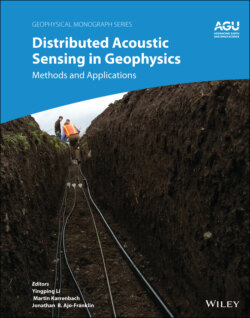Читать книгу Distributed Acoustic Sensing in Geophysics - Группа авторов - Страница 75
4.5. CONCLUSIONS
ОглавлениеWe propose a real‐time DAS system based on PGC demodulation algorithm. Compared with the previous work (Fang et al., 2015), it brings a 15.6 dB improvement in phase noise. The average noise could reach ~5 × 10‐4 rad/√Hz, and the strain sensitivity is as small as 8.5 pε/√Hz for a 10 m spatial resolution. This PGC‐DAS system could measure the dynamic vibration signal from 2 Hz to 1 kHz over a 10 km long optical fiber, with a linear coefficient R2 of 0.99941 and a minimum spatial interval of 0.4 m. The near‐surface seismic experimental results show that DAS data are qualitatively similar to the signals observed on the geophones. These facts suggest that DAS technology provides a novel and highly valuable tool for geophysical science in a wider sense. Moreover, PGC‐DAS system has potential advantages in reducing size and power consumption due to simple structure and efficient phase demodulation algorithm, and a mini‐PGC‐DAS module is under development, with a size of 150 mm × 300 mm × 110 mm (width × depth × height) and a power consumption of 25 W, which could work at the bottom for submarine application.
Figure 4.7 Field trial of near‐surface seismic experiment. (a) Plan view of experimental layout, (b) photo of the buried fiber optic cable, (c) photo of a 3C geophone, and (d) structure of the fiber optic cable.
Figure 4.8 Initial data of DAS system and geophone array for x‐component at P1 in Line 1.
